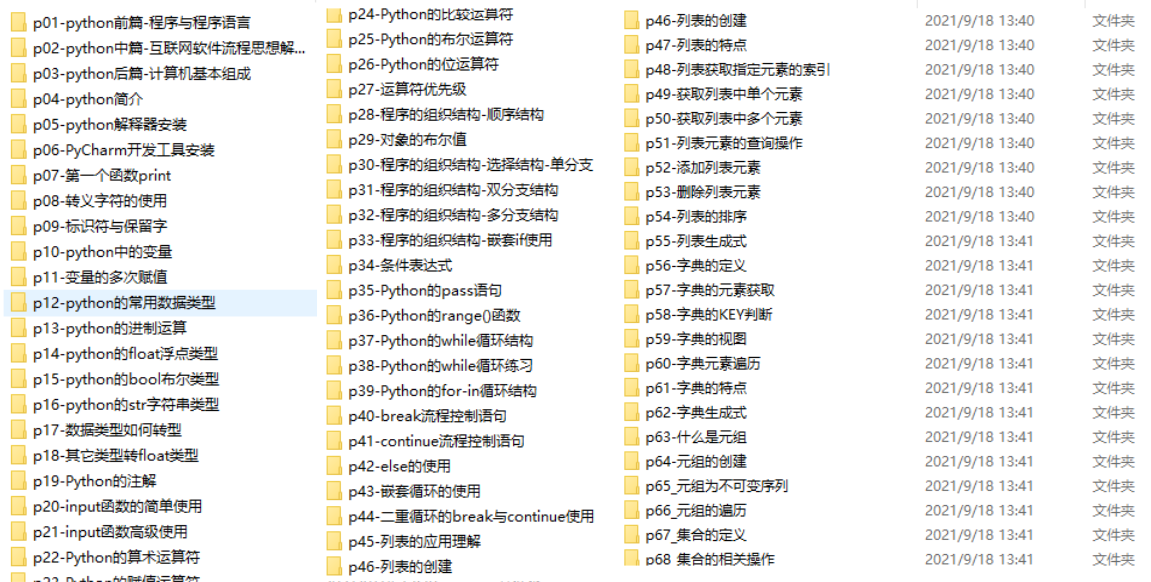with open(‘text_1.txt’, ‘wt’) as f:
f.write(new_line_1+‘\n’)
f.write(new_line_2+‘\n’)
D.
new_line_1 = “New line 1”
new_line_2 = “New line 2”
with open(‘text_1.txt’, ‘at’) as f:
f.write(new_line_1+‘\n’)
f.write(new_line_2+‘\n’)
正确答案: D
### 5. 第 5 题:将打印输出到文件中
知识点描述:将 print() 函数的输出重定向到指定日志文件中。
问题描述:将当前时间写入日志文件 “log.txt” 中,并记录函数执行结果,请从以下选项中选出你认为正确的答案:
A.
from datetime import datetime
def hello_world(num):
return “Hello world {}!”.format(num)
for i in range(10):
with open(‘log.txt’, ‘at’) as f:
print(str(datetime.today()) + ‘\t’ + hello_world(i), file=f)
B.
from datetime import datetime
def hello_world(num):
return “Hello world {}!”.format(num)
for i in range(10):
with open(‘log.txt’, ‘at’) as f:
print(datetime.today() + ‘\t’ + hello_world(i), file=f)
C.
from datetime import datetime
def hello_world(num):
return “Hello world {}!”.format(num)
for i in range(10):
with open(‘log.txt’, ‘wt’) as f:
print(datetime.today() + ‘\t’ + hello_world(i))
D.
from datetime import datetime
def hello_world(num):
return “Hello world {}!”.format(num)
for i in range(10):
with open(‘log.txt’, ‘wt’) as f:
print(str(datetime.today()) + ‘\t’ + hello_world(i), file=f)
正确答案: A
### 6. 第 6 题:二进制文件的读写
知识点描述:读写二进制文件,如图片、声音文件等。
问题描述:已知存在二进制文件 “test.bin”,如何正确向此文件追加写入文本数据,请从以下选项中选出你认为正确的答案:
A.
with open(‘test.bin’, ‘at’) as f:
text = ‘Hello World!\n’
f.write(text)
B.
with open(‘test.bin’, ‘wb’) as f:
text = ‘Hello World!\n’
f.write(text.encode(‘utf-8’))
C.
with open(‘test.bin’, ‘ab’) as f:
text = ‘Hello World!\n’
f.write(text.encode(‘utf-8’))
D.
with open(‘test.bin’, ‘ab’) as f:
text = ‘Hello World!\n’
f.write(text)
正确答案: C
### 7. 第 7 题:压缩文件的读写
知识点描述:读写 gzip 或 bz2 格式的压缩文件。
问题描述:请从以下选项中选择能够将文本文件 “text.txt” 内容写入压缩文件 “compress.gz” 的程序,且要求压缩程度最佳:
A.
import gzip
text = ‘text.txt’
with gzip.open(‘compress.gz’, ‘wt’, compresslevel = 9) as f:
f.write(text)
B.
import gzip
text = ‘text.txt’
with gzip.open(‘compress.gz’, ‘wt’, compresslevel = 0) as f:
f.write(text)
C.
import gzip
text = ‘text.txt’
with open(text, ‘rt’) as file:
read_text = file.read()
with gzip.open(‘compress.gz’, ‘wt’, compresslevel = 9) as f:
f.write(read_text)
D.
import gzip
text = ‘text.txt’
with open(text, ‘rt’) as file:
read_text = file.read()
with gzip.open(‘compress.gz’, ‘wt’, compresslevel = 0) as f:
f.write(read_text)
正确答案:C
### 8. 第 8 题:以固定数据块大小读取文件
知识点描述:以固定长度数据块长度迭代读取文件,而非逐行读取。
问题描述:存在一文件 “test.bin”,编写程序每次读取数据块大小为 16B,直到文件末尾:
A.
from functools import partial
RECORD_SIZE = 16
with open(‘test.bin’, ‘rt’) as f:
records = iter(partial(f.read, RECORD_SIZE), b’')
for r in records:
print®
B.
from functools import partial
RECORD_SIZE = 16
with open(‘test.bin’, ‘rb’) as f:
records = iter(partial(f.read, RECORD_SIZE), b’')
for r in records:
print®
C.
from functools import partial
RECORD_SIZE = 16 * 8
with open(‘test.bin’, ‘rt’) as f:
records = iter(partial(f.read, RECORD_SIZE), b’')
for r in records:
print®
D.
from functools import partial
RECORD_SIZE = 16
with open(‘test.bin’, ‘rt’) as f:
records = iter(partial(f.read, RECORD_SIZE), ‘’)
for r in records:
print®
正确答案:B
### 9. 第 9 题:增加或改变已打开文件的编码方式
知识点描述:在不关闭已打开文件前提下改变文件的编码方式。
问题描述:如何为一个以二进制模式打开的文件添加 “utf-8” 编码方式,请从以下选项中选出你认为正确的答案:
A.
import urllib.request
import io
with urllib.request.urlopen(‘https://blog.csdn.net/LOVEmy134611’) as u:
f = io.TextIOWrapper(u, encoding = ‘utf-8’)
text = f.read()
print(text)
B.
import urllib.request
import io
with urllib.request.urlopen(‘https://blog.csdn.net/LOVEmy134611’) as u:
f = io.TextIOWrapper(u.read(), encoding = ‘utf-8’)
text = f.read()
print(text)
C.
import urllib.request
import io
with urllib.request.urlopen(‘https://blog.csdn.net/LOVEmy134611’) as u:
f = io.TextIOWrapper(u.detach(), encoding = ‘utf-8’)
text = f.read()
print(text)
D.
import urllib.request
import io
with urllib.request.urlopen(‘https://blog.csdn.net/LOVEmy134611’) as u:
f = io.TextIOWrapper(u).encoding=‘utf-8’
text = f.read()
print(text)
正确答案:A
### 10. 第 10 题:临时文件与文件夹的创建
知识点描述:在程序执行时创建临时文件或目录,并在使用后自动销毁。
问题描述:创建一个命名临时文件,向文件中写入 “Hello Python!” 后打印文件名,请从以下选项中选出你认为正确的答案:
A.
from tempfile import NamedTemporaryFile
with NamedTemporaryFile(‘text.txt’, ‘wt’) as f:
f.write(‘Hello Python!\n’)
print(f.name)
B.
from tempfile import TemporaryFile
with TemporaryFile(‘text.txt’, ‘wt’) as f:
f.write(‘Hello Python!\n’)
print(f.name)
C.
from tempfile import NamedTemporaryFile
with NamedTemporaryFile(‘wt’) as f:
f.write(‘Hello Python!\n’)
print(f.name)
D.
from tempfile import TemporaryFile
with TemporaryFile(‘wt’) as f:
f.write(‘Hello Python!\n’)
print(f.name)
现在能在网上找到很多很多的学习资源,有免费的也有收费的,当我拿到1套比较全的学习资源之前,我并没着急去看第1节,我而是去审视这套资源是否值得学习,有时候也会去问一些学长的意见,如果可以之后,我会对这套学习资源做1个学习计划,我的学习计划主要包括规划图和学习进度表。
分享给大家这份我薅到的免费视频资料,质量还不错,大家可以跟着学习

网上学习资料一大堆,但如果学到的知识不成体系,遇到问题时只是浅尝辄止,不再深入研究,那么很难做到真正的技术提升。
一个人可以走的很快,但一群人才能走的更远!不论你是正从事IT行业的老鸟或是对IT行业感兴趣的新人,都欢迎加入我们的的圈子(技术交流、学习资源、职场吐槽、大厂内推、面试辅导),让我们一起学习成长!







 文章讲述了在Python中进行文件操作,包括写入文本数据到文件(追加模式)、处理二进制文件、使用gzip压缩文件以及修改文件编码和创建临时文件的方法。
文章讲述了在Python中进行文件操作,包括写入文本数据到文件(追加模式)、处理二进制文件、使用gzip压缩文件以及修改文件编码和创建临时文件的方法。














 2250
2250

 被折叠的 条评论
为什么被折叠?
被折叠的 条评论
为什么被折叠?








